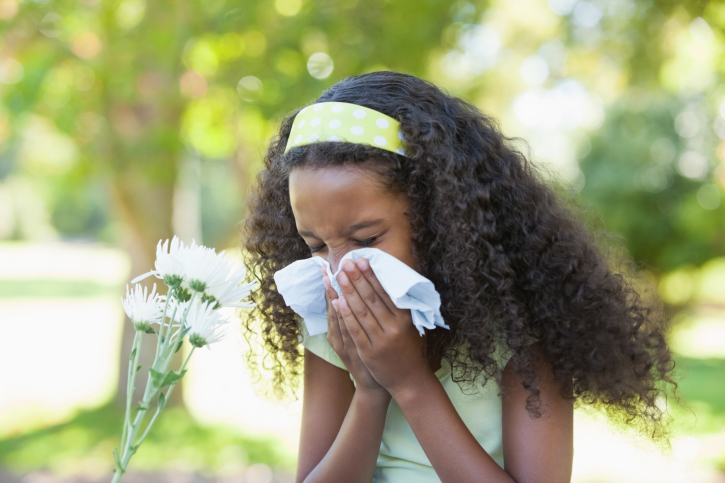April showers might bring May flowers, but guess what else spring brings? Allergies! During spring, trees and grasses are pollinating. If you are one of the over 50 million Americans that have allergies, you could risk your springtime being filled with lots of sniffles and sneezes. And unfortunately, it’s not only spring that could be making you sneeze–from dust mites to pet dander, there may be plenty of other allergens in your home. Luckily, there are some things you can do to limit your exposure to allergens, which helps reduce their effects. Read on to learn about some simple ways to manage your allergies.
Reduce the effects of pollen. If weeds and trees make you sneeze, try these tips:
- Before going outside, check your local pollen count. Everyday Health has an online allergy pollen counter that you can use.
- On windy days, consider staying inside between 10 AM and 4 PM, when pollen counts as well as mold counts tend to be at their highest for the day.
- If you’ve been outside on days when the pollen count is high, consider taking a shower before you go to sleep to reduce the amount of pollen you might transfer to your pillow.
- On days when the pollen count is high, keep your windows closed and opt for air-conditioning or fans to keep you cool instead. (Don’t forget–before you turn the fan on, make sure it’s properly dusted!)
- Make sure to follow the manufacturer’s recommendations for replacing your car’s cabin air filter–this filter can help reduce allergens that get into the car while you’re driving.
- Consider using an allergy filter on your air conditioner.
- Keep all flowering plants outside your house.
- Don’t hang bed linens or clothes outside to dry–they can accumulate pollen.
Do some spring cleaning. In addition to dealing with allergens outside, the dust mites, mold and mildew, and pet dander/hair that hang out inside your home can also affect your allergies.
- To reduce the effects of dust mites, purchase mite-proof covers for your mattress and box spring, and wash your bedding weekly. Make your home’s environment inhospitable to dust mites by keeping the temperature under 70 degrees Fahrenheit and having an average humidity of 30-50%.
- Vacuum often, and consider choosing a vacuum with a HEPA filter to help trap dust mite particles, pet dander, pet hair, and more.
- Dust dressers, nightstands, windowsills, bookshelves, and other surfaces often.
- Dry-clean your curtains–which collect dust–about every 2 months.
- To minimize the amount of dust and other allergens that get into your nose and mouth when you clean, consider using a dust mask.
- If you are sensitive to mold and mildew, clean your shower and bathtub often. Make sure you take all items like shampoos and body washes out of the bathtub/shower before you clean–this way you’ll be able to reach all the little corners, nooks and crannies that mold and mildew tend to frequent.
- Consider keeping your pets out of the bedroom so that you aren’t breathing in pet hair and dander while you sleep.
Talk to your doctor. Ask your primary care physician or your allergist if any of these common remedies would be right for you:
- Antihistamines
- Decongestants
- Saline nasal sprays
- Eyedrops
- Allergy shots
If you have more questions about how to manage your allergies, make sure to talk to your primary care physician or your allergist.



